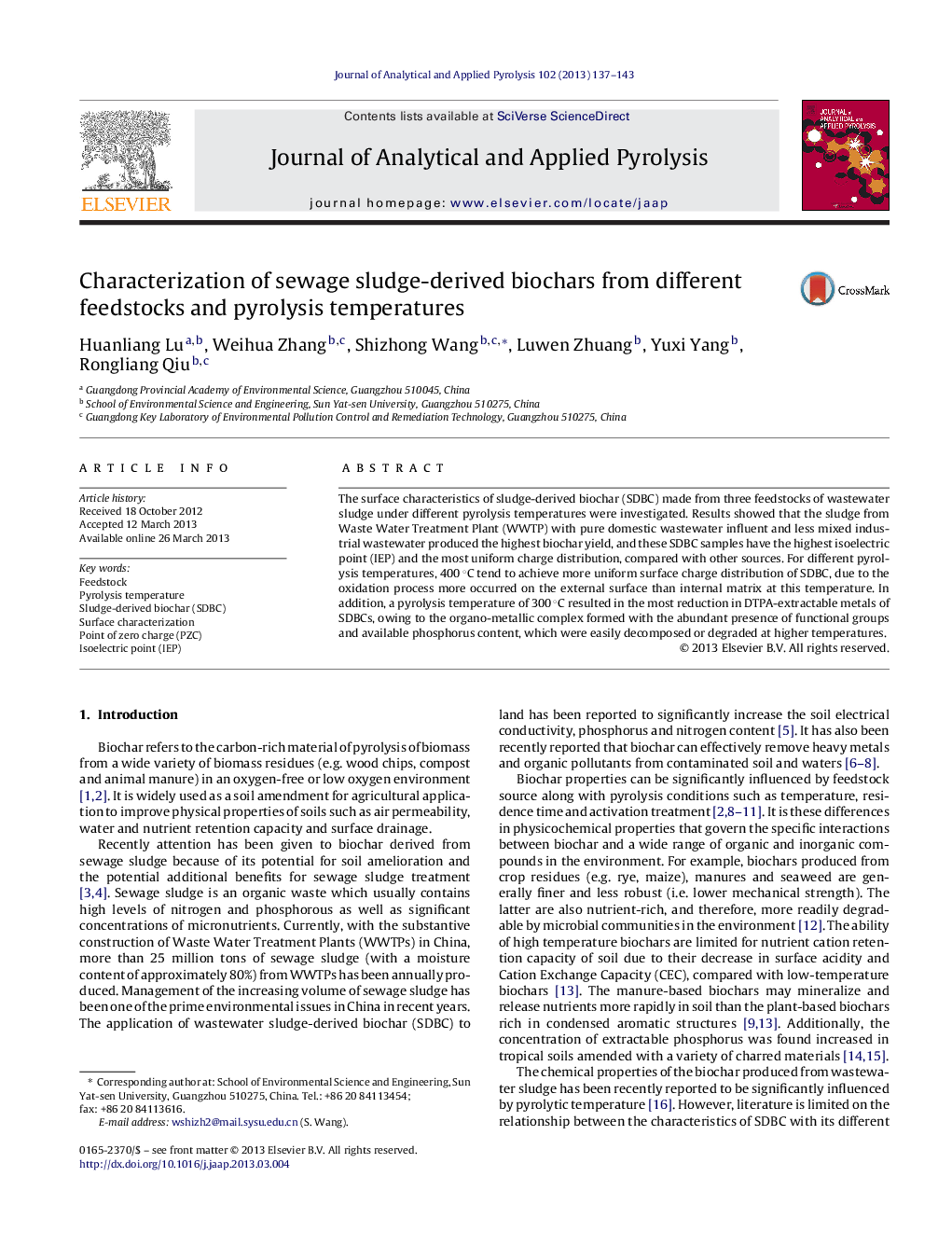| Article ID | Journal | Published Year | Pages | File Type |
|---|---|---|---|---|
| 1196898 | Journal of Analytical and Applied Pyrolysis | 2013 | 7 Pages |
•The sludge obtained from WWTP with pure sewage is suitable for preparing biochars with high isoelectric point (IEP) and uniform charge distribution.•The pyrolysis temperature of 400 °C was optimal to produce SDBC with more uniform surface charge distribution.•The pyrolysis temperature of 300 °C resulted in the most reduction in DTPA-extractable metals in the SDBC.•Environmental risk of SDBC can be minimized and managed by controlling the source of feedstock and pyrolysis temperature.
The surface characteristics of sludge-derived biochar (SDBC) made from three feedstocks of wastewater sludge under different pyrolysis temperatures were investigated. Results showed that the sludge from Waste Water Treatment Plant (WWTP) with pure domestic wastewater influent and less mixed industrial wastewater produced the highest biochar yield, and these SDBC samples have the highest isoelectric point (IEP) and the most uniform charge distribution, compared with other sources. For different pyrolysis temperatures, 400 °C tend to achieve more uniform surface charge distribution of SDBC, due to the oxidation process more occurred on the external surface than internal matrix at this temperature. In addition, a pyrolysis temperature of 300 °C resulted in the most reduction in DTPA-extractable metals of SDBCs, owing to the organo-metallic complex formed with the abundant presence of functional groups and available phosphorus content, which were easily decomposed or degraded at higher temperatures.
